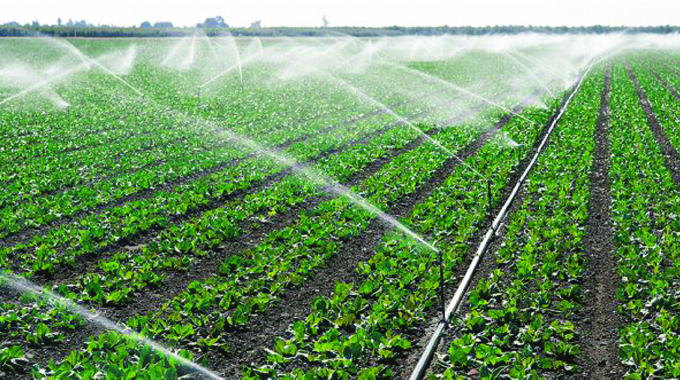Source: Irrigation offers cotton farmers hope | The Herald
Business Reporter
In the face of climate change-induced droughts, irrigation is offering hope to cotton farmers in Checheche in southeast Zimbabwe with hundreds of growers improving production.
Checheche, like other cotton-growing areas in Zimbabwe, is facing some of the biggest extreme weather risks, which are affecting production.
The Cotton Company of Zimbabwe launched a mini irrigation scheme in Checheche two seasons ago, which is now benefiting about 130 farmers.
“Dryland cotton is no longer reliable because of droughts,” said farmer Joseph Mashava. “Irrigation is a game changer and we are happy with the yields even on a smaller piece of land.”
Another farmer Ms Kumbirai Sithole said irrigation had provided hope for many farmers while imploring Cottco to expand the scheme.
“In as much as cotton is a drought resistant crop, the rains have been very erratic in recent years and this was affecting production.
“It’s our desire to have more farmers under the irrigation scheme . . . Our yields have significantly improved.”
Cotton is one of Zimbabwe’s major cash crops and contributes significantly to economic growth and improved livelihoods among growers.
After slumping to a two-decade low of 28 000 tonnes in 2015, cotton production has since rebounded due to Government intervention through the Presidential Input Support Scheme, which provides free inputs.
Poor prices had triggered loss of appetite for cotton farming.
Some farmers found themselves stuck with huge debts as the money they would have earned from selling their crop to contractors was not enough to repay the loans, thus relegating them to mere labourers.
The Government subsequently came up with the Presidential Cotton Inputs Scheme meant to support farmers with free inputs such as seed, fertilisers and chemicals.
The scheme is different from those previously run by private merchants when farmers were given inputs on a commercial basis, meaning they needed to repay after selling their crop.
The programme, now running for the sixth consecutive year, regenerated massive interest among farmers who had abandoned cotton for other crops citing poor prices and lack of agronomy support from contractors.
The State-assisted programme brought new hope for farmers.
Resultantly, output rebounded, reaching 144 000 tonnes in the 2017/2018 season. It, however, declined the following two seasons due to back-to-back droughts that swept across many parts of the region.

